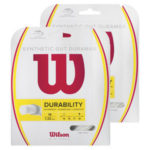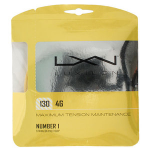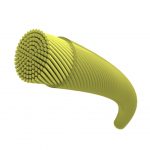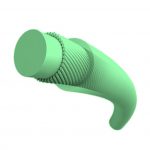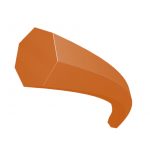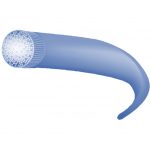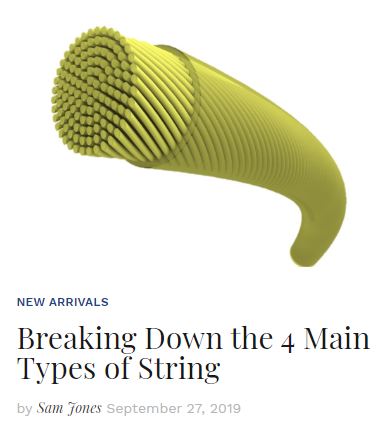Tennis strings are a critical part of any racquet. The evolution of tennis strings has changed over the years and created many different options for players to choose from. So how do you know what the best string is for you? Let’s talk with certified USRSA racquet stringers to learn more about strings and how it can impact your game.
First up, we have Zach Leal. He’s been stringing racquets for about 8 years and is one of the leading stringers in store.
 Q: Welcome Zach, why should player’s care about tennis strings?
Q: Welcome Zach, why should player’s care about tennis strings?
A: You want to make sure you’re getting the proper affects out of that string, whether it be spin, power, feel or control. These affects can help you remain confident and swing with confidence throughout your match. Also you want to find the right string to suit your game style so it can enhance your play.
Q: What would you say are the primary types of tennis strings?
A: As far as the most common ones that come in store, there’s going to be a Synthetic Gut, Multifilament, Polyester and Natural Gut.
- Synthetic Gut – Has a solid nylon core with an outer wrap. Usually they offer great durability and responsiveness at a cheaper price point.
- Multifilament – Made with thousands of little fibers going through it and is bonded together with some resin. These are great for feel, comfort, elasticity and shock absorption, but are not very durable.
- Polyester – Solid piece of string that’s king for spin and durability. However, they are very stiff and lose tension the quickest.
- Natural Gut – Most expensive string on the market, but provides the best power, tension maintenance, feel and comfort. On the downside it’s not as good for shear strength, so if you have a lot of mishits it may break suddenly.
Q: What is a common misconception about strings?
A: Strings are only meant to enhance the players’ abilities. So polyester strings can’t actually give you more spin or power without having the proper mechanics and racquet head speed.

Rafael Nadal returning a forehand at the 2017 French Open (Source: Jun 11, 2017 – Getty Images)
Q: One last question, Zach. Can strings actually give you tennis elbow?
A: Yes they can! It can affect how much shock is coming back into the arm. If you combine stiff strings with a stiff racquet and a high tension, it’s not going to be good for your arm. Players can combat this by using softer strings like natural gut or multifilament which provide more long term comfort. Our job is to make sure you can get back out on the court and don’t get hurt, otherwise we aren’t doing our jobs properly.
Thank you Zach for your time.
Next up is our second stringing expert, Vincent Mallari. He’s been a certified stringer for 4 years and has been stringing for 7 years.
 Q: Welcome Vince, so in terms of stringing how often do you feel the average player should be restringing their racquet?
Q: Welcome Vince, so in terms of stringing how often do you feel the average player should be restringing their racquet?
A: Varies between players as it depends on the type of abuse you put on your racquet. The general rule of thumb is as follows: How ever often you’re playing a week, is usually how often you should be getting your racquet restrung in the year. For example if you play 4 times a week, you’re looking to get your racquet restrung at least 3-4 times a year.
Q: What could you do if you’re breaking strings to quickly?
A: There’s 2 things that you can do to combat string breakage. 1. Try hitting with a thicker gauge size or 2. Switch to a different string material that’s more for durable. For example if you’re playing with an 18g multifilament string, you can move to a thicker 17g or 16g string or switch to a synthetic gut or polyester string. Players may also want to experiment with a hybrid set, putting polyester or synthetic gut in the mains and keeping multi in the crosses. Hybrids allow you to still get ample comfort from the string you already use, while giving you a little more durability with a stiffer string.
Q: Does tension actually affect your tennis string? If so, How?
A: Yes tension always effects the way a tennis string feels. You see pros often switching between racquets just to find their right tension for that day or match obvious factors include weather (hot or cold), ball type and surface type. Most players will stick with the range that the manufacturer recommends first and then change from there.
Q: How do you know what tension is right for you?
A: Depends on your playstyle and the type of string you have. Higher tensions will often result in more control, while lower tensions will result in more power. Exception is polyester strings which should always be strung 10-20% lower than your normal tension preference.
Thanks Vincent for talking with me today. That concludes our conversation about strings and how it can impact your game. Remember that it’s okay to try out many different strings and tensions till you find one you really enjoy. Not all strings are created equal so it may take some time to find the right fit. Make sure your strings feel good so you can go out and dominate the court.
For More:


